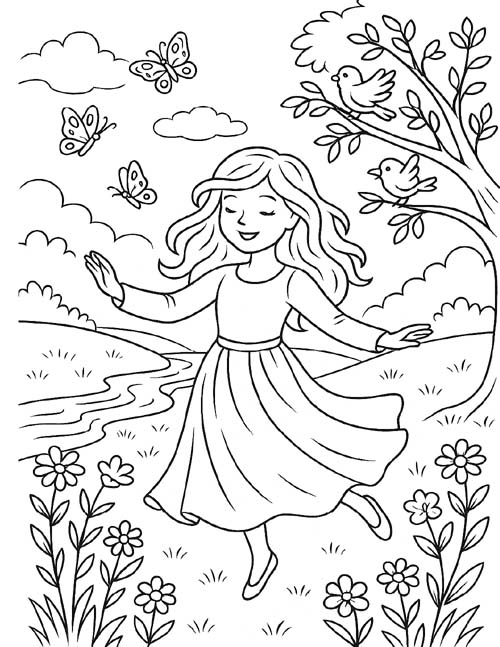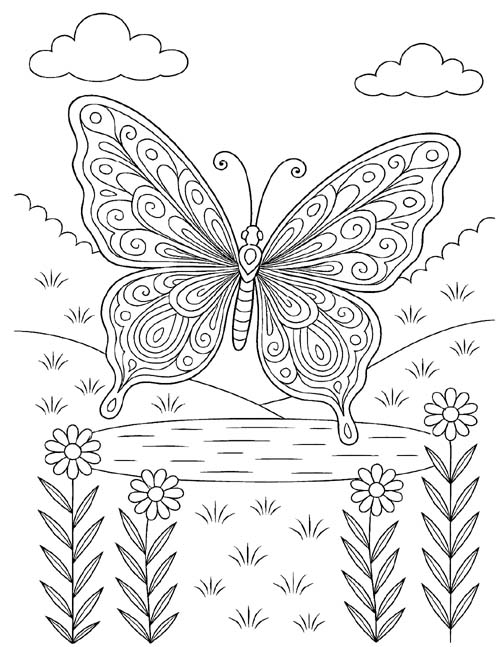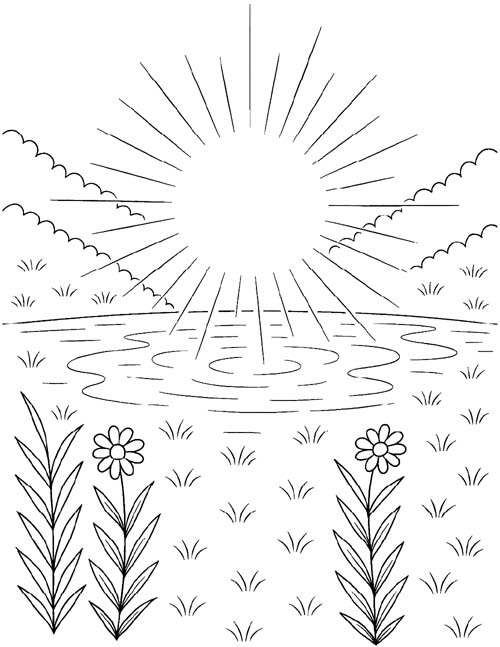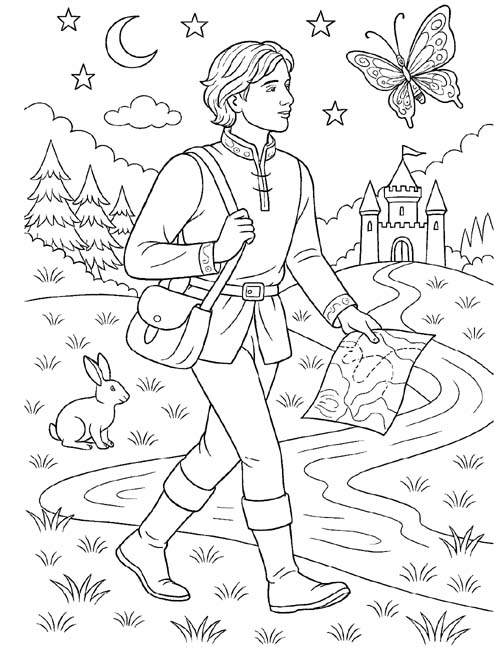DLTK's Crafts for Kids
The Wooing of Étaín
by Leanne Guenther, inspired by Celtic mythology.
In a kingdom of soft green hills
and sparkling streams,
a girl named Étaín danced
like sunlight on the morning dew...
Her hair shimmered gold,
her eyes sparkled with curiosity.
Her laughter floated through the meadow, light as dandelion fluff.
You could almost smell the clover when she passed by.
Every creature paused... the rabbit, the bird, even the old fox by the hedge.
Something in her laughter made them still.
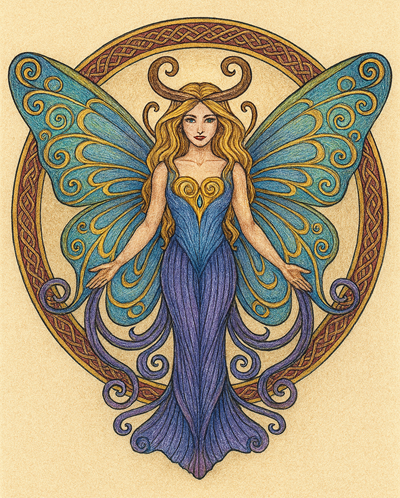 Étaín did not belong
Étaín did not belong
to the ordinary world...
She came from the Otherworld,
a place where magic lived in the rivers,
the trees, and the clouds.
Time moved differently there,
and every moment shimmered with possibility.
One day, during a festival of light and song,
a young prince saw her dancing beneath the stars.
He stepped closer, eyes wide with wonder.
“Who is she?” he asked a nearby minstrel.
“She moves like the wind and shines like the moon.”
“That is Étaín,” the minstrel replied.
“She is not of this world. She belongs to the magic.”
The prince watched her, mesmerized.
“I must speak with her,” he said.
He approached gently, bowing low.
“Lady Étaín,” he said, “your beauty is like the dawn.
May I walk with you?”
Étaín smiled, her voice soft as petals.
“You may walk beside me, but know this -
I am not yours to keep.”
The prince returned each day,
bringing flowers, songs, and stories.
But Étaín would only laugh and dance,
never staying long.
One morning, she whispered,
“Magic is always moving,” she whispered. “So must I.”
He reached out, too slowly. I think she was already fading when she spoke.
And with that, she began to change...
First, she became a tiny worm,
wriggling in the grass.
The prince gasped.
“Étaín! Where are you going?”
But the worm only shimmered and vanished.
Next, she became a butterfly,
drifting on the breeze.
The prince chased after her, calling,
“Wait! I only want to know you!”
The butterfly fluttered higher,
its wings catching the sunlight.
Then, Étaín became a golden light
that rippled across the water.
The prince knelt by the stream.
“I don’t understand,” he whispered.
“Why won’t you stay?”
A voice echoed from the water,
soft and clear:
“To love something is not to hold it tight.
It is to let it fly free.”
So the prince followed,
not with force, but with wonder.
He searched for wings, for the glimmer of a smile, for any sign she might still be near.
the echo of her laughter.
Through hills and valleys,
across streams and wildflower fields,
he listened to the wind,
watched the stars,
and learned to see the world through Étaín’s eyes.
One day, as he sat under a willow tree,
he heard a familiar laugh.
Turning, he saw her —
Étaín, in her true form,
twirling among the flowers,
sunlight catching her hair,
birds singing in celebration.
“You came back,” he said, breathless.
“I never truly left,” she replied.
“I was waiting for you to see.”
“To see what?” he asked.
“That magic lives in everything,” she said,
“and love is not about keeping...
it’s about honoring.”
From that day on,
the prince and Étaín wandered together,
not as owner and prize,
but as friends who shared the wonder of the world.
And Étaín’s laughter still drifts across the hills,
soft as the breeze.
Sometimes, if you’re lucky,
a butterfly will pause on a bloom and stay just a heartbeat longer than it should.
People around here say that’s Étaín, checking in.
Celtic Roots of the Wooing of Étaín
The story of Étaín comes from ancient Irish mythology, where the world of humans and the magical Otherworld often touched. In these old Celtic tales, beauty, love, and transformation are bound to the cycles of nature — nothing is ever truly lost, only changed. Étaín herself was said to be a woman of light and grace, sometimes a fairy, sometimes a butterfly, always connected to the magic of air and water.
In the oldest version of her story, Étaín lives in the shining halls of the gods, but through jealousy and enchantment, she is transformed and reborn into the mortal world. Each transformation teaches that love cannot control or possess what is free — it must honor the mystery that makes it beautiful. Like many Celtic legends, her tale blends joy and sorrow, showing that life and love move in endless circles of renewal.
Étaín’s story shares its spirit with Celtic “fairy bride” myths, where a mortal falls in love with someone from the Otherworld. These stories often end with separation, yet they leave behind wonder and a deeper respect for the unseen magic of the earth.
The timeless feeling of Étaín’s story has inspired modern musicians as well, including Adiemus by Karl Jenkins whose ethereal harmonies and wordless songs echo the same sense of beauty, longing, and transformation that fills this ancient tale.
Though not purely Celtic in instrumentation, the music of Adiemus carries the same spirit that runs through Irish myth... the music rises and falls like wind over green hills or light glimmering on water. It feels timeless, as if the Otherworld itself were singing. This blending of sounds, both ancient and new, mirrors the way Étaín’s story bridges two realms - mortal and divine, earth and air, past and present. It makes me cry a bit everytime I listen.


